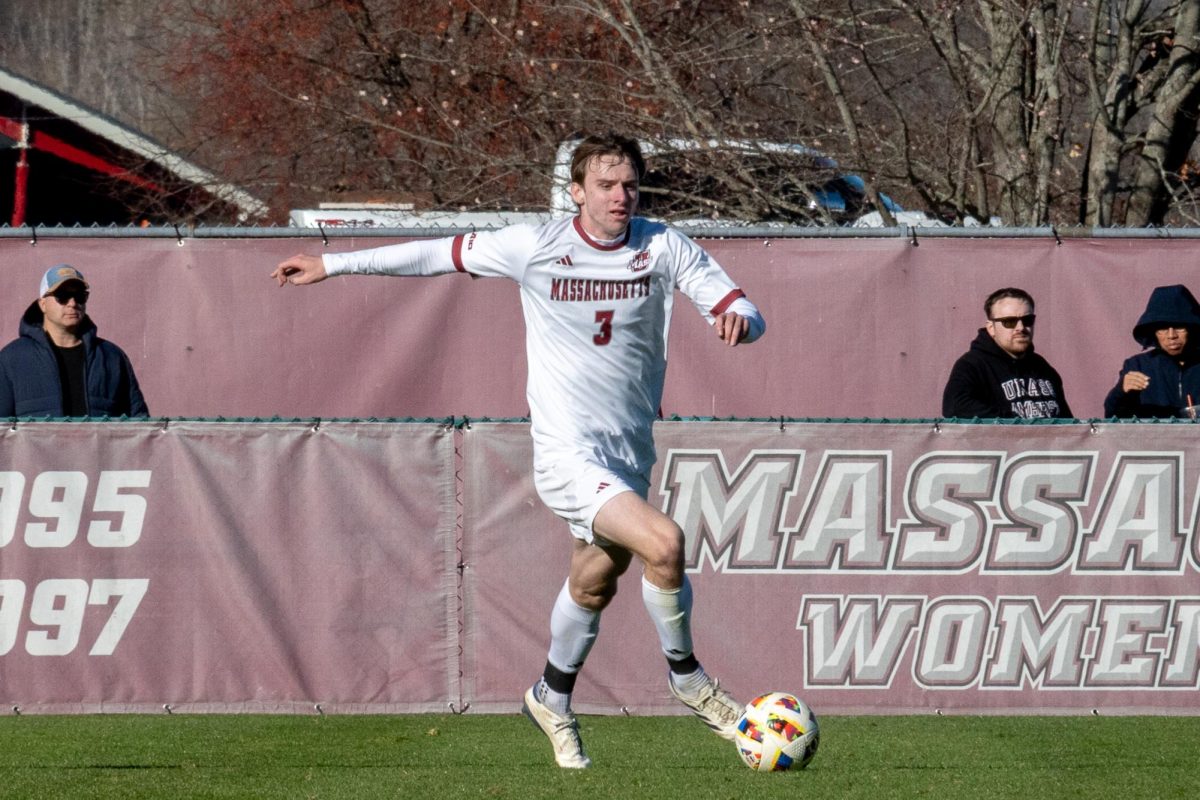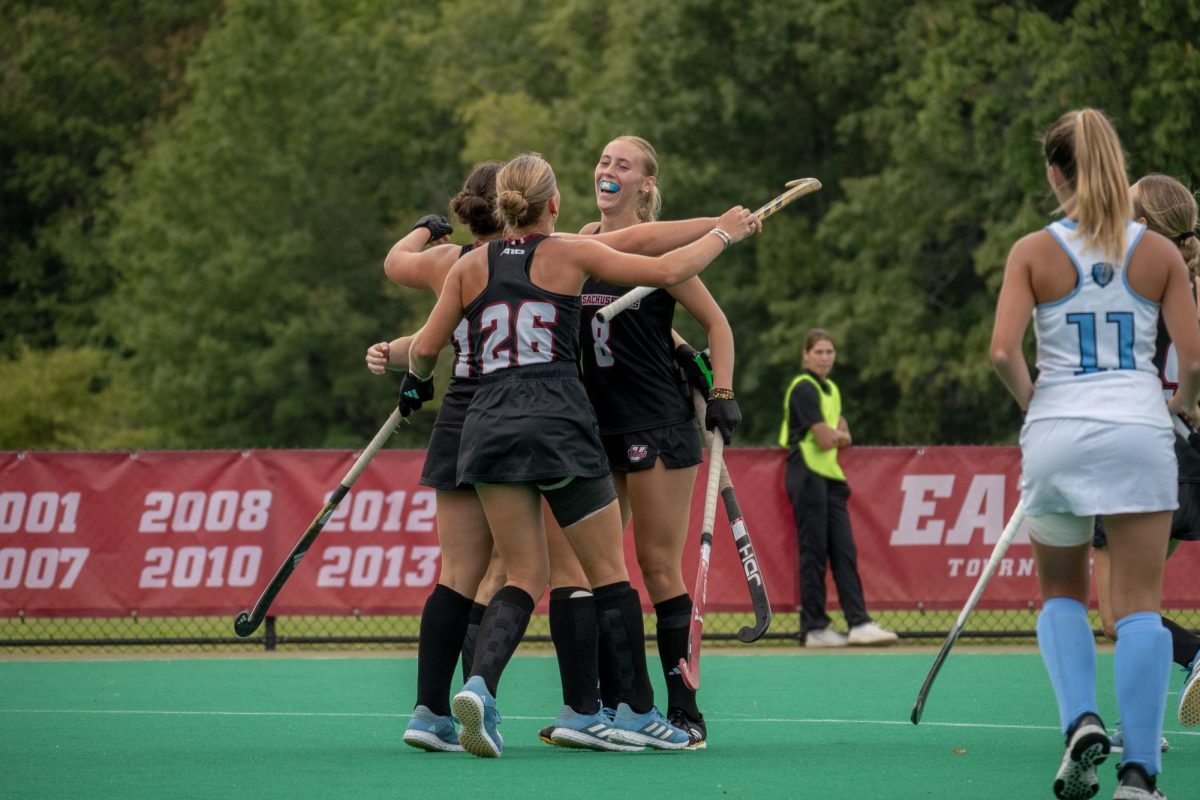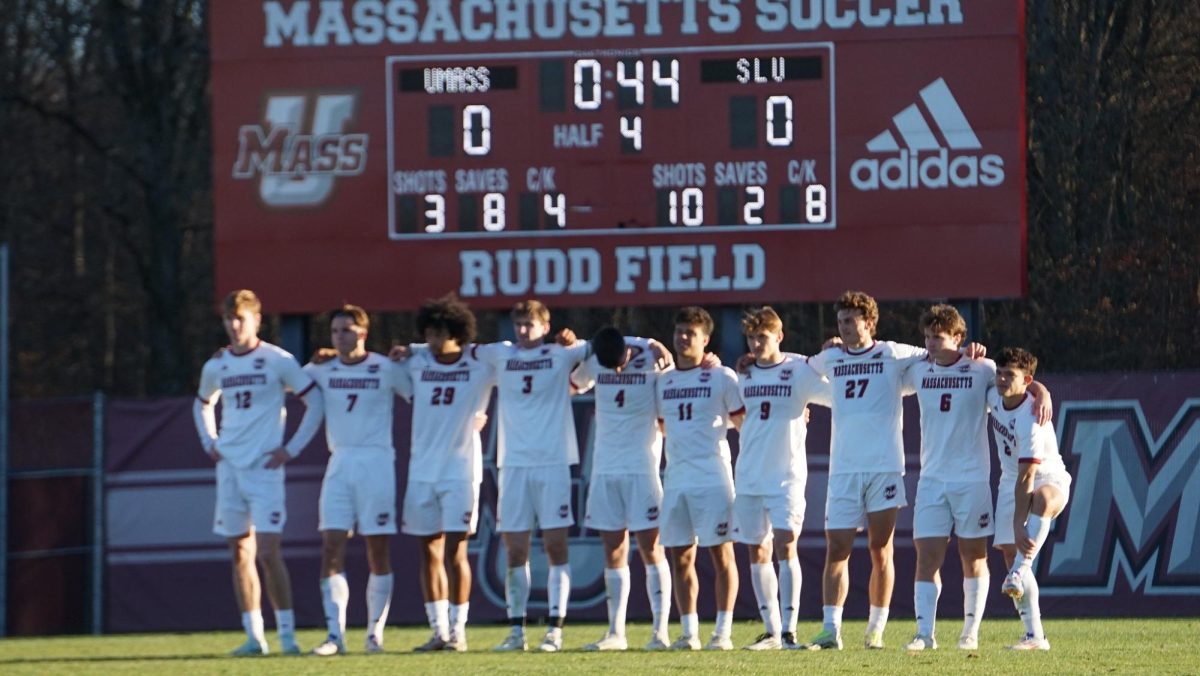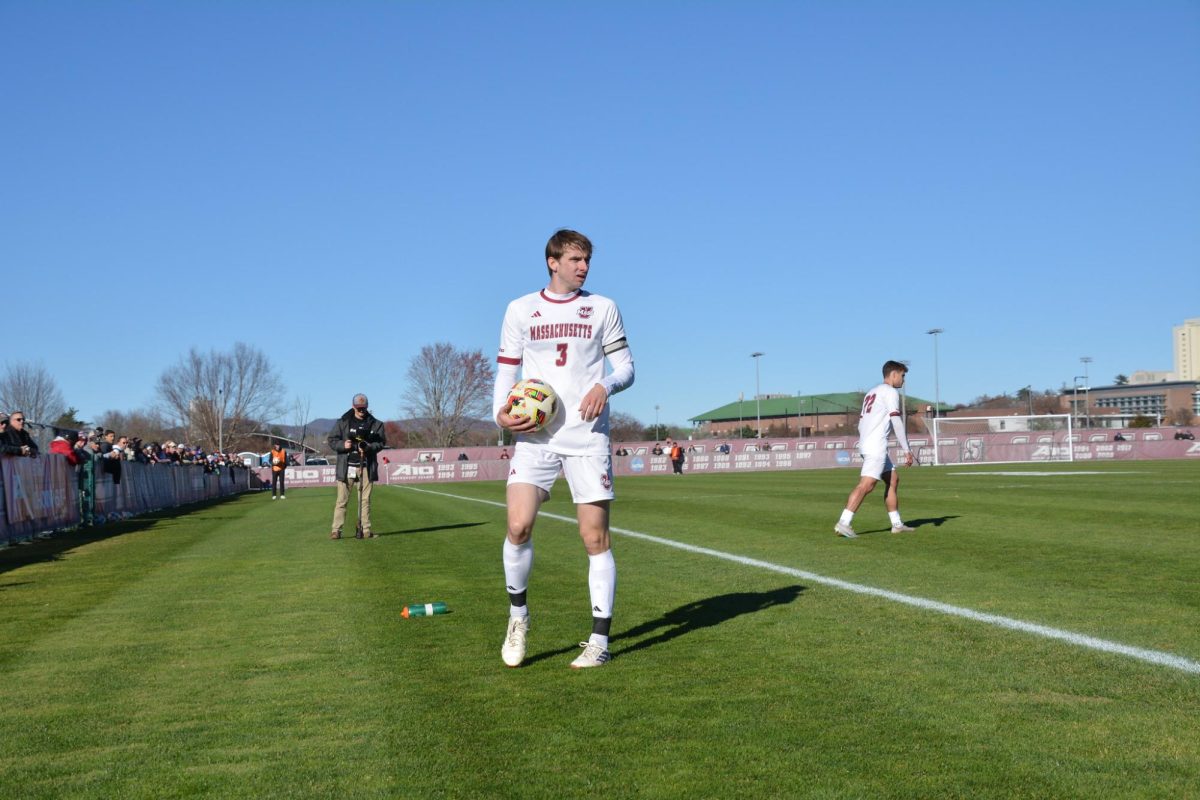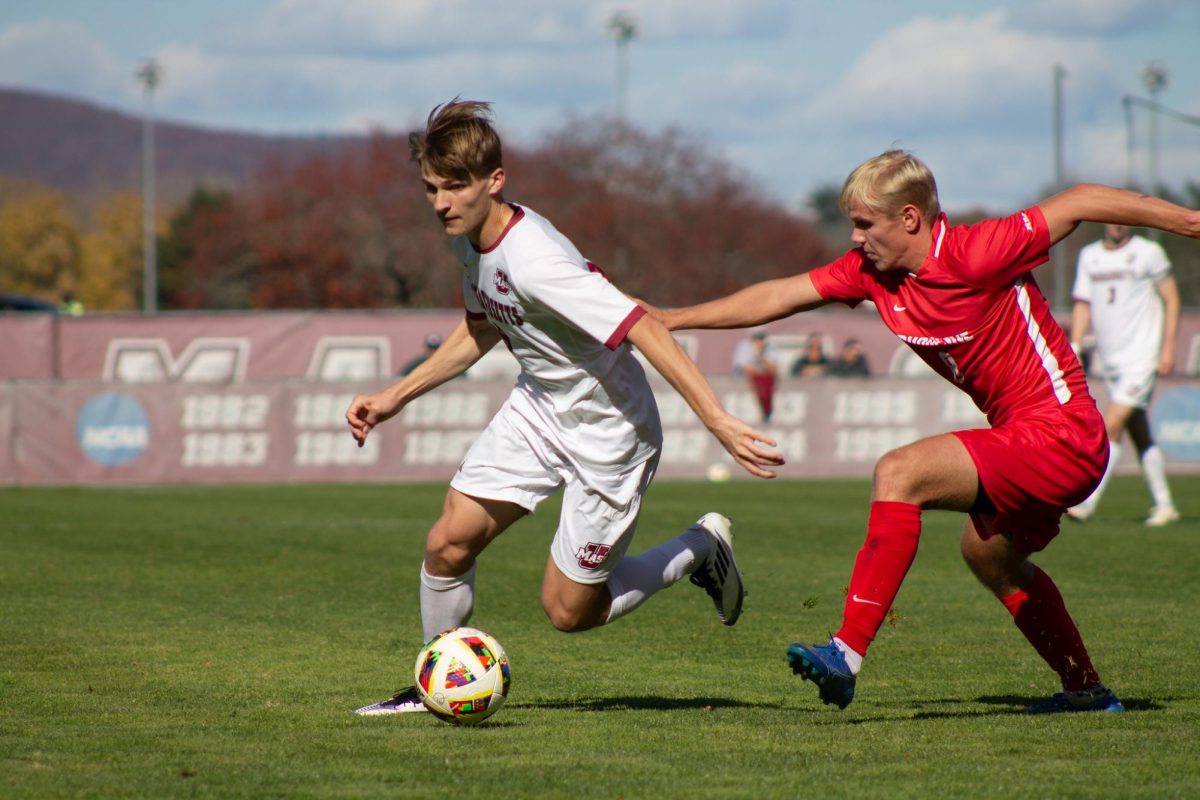
The 2014 season for the Massachusetts men’s soccer team did not go as planned. The Minutemen (3-14-1, 2-5-1 in A-10) struggled throughout the year and failed to qualify for the postseason.
But success on the field was always going to be difficult after UMass coach Sam Koch died after a two-year battle with sinus cancer in July, prior to the start of the season. Koch, who had been at the helm for 23 seasons, was succeeded by former assistant Devin O’Neill, who stepped into the role of interim head coach.
O’Neill told the Collegian back in September that his first priority was to reach out to his players and set up a “strong support network,” to ensure the emotional well being of his team. O’Neill maintained this philosophy for the rest of the season, making sure to continue building relationships with the team.
“Sometimes as a head coach you are dealing with so many big ticket items that some of the personal interactions get sacrificed,” O’Neill said. “So I think that maintaining these relationships is the thing that I want to do the best job of.”
On the field, the Minutemen had a young squad with 19 underclassmen on a roster of 27 players. This meant the eight upperclassmen – specifically the two seniors Matt Keys and Josh Schwartz – were expected to carry the team until the younger players adapted to the college level. But a handful of underclassmen played vital roles on the team, including midfielders Luke Pavone and Matthew Mooney and goalkeeper Ryan Buckingham.
On the field
It’s easy to write off UMass based on its record. But the truth is that in soccer, results cannot fully capture the complexities and dynamics of what goes on in every game. In soccer, there is no empirical formula that can be applied to win every match.
Each time a team takes the field, they have to experiment and develop a unique system that fits the style of the game. If done correctly, the system should enable the unit to maximize its strengths and minimize its weaknesses.
The Minutemen tried to adapt their attack and defense to best fit the personnel of the team, but inexperience and quality competition was often the deciding factor late in games.
UMass employed a number of tactical changes under O’Neill that expressed the versatility of the coaching staff. The more traditional formations they used included a 4-4-2 and 4-3-3 setup, which emphasized the importance of a strong midfield and brought out a flexible attacking shape. O’Neill demanded that attackers track back and defend, and vice versa, meaning the defenders were encouraged to maraud forward when the Minutemen were in possession.
Some of the more unique systems included a 4-5-1 formation, in which the 6-foot-4 Keys played as the target forward. This change brought the best player on the field into the attack, and also added another number into the midfield to help win possession and break up opposing play.
Near the end of the year, O’Neill tried the 3-5-2, which uses three central defenders, and utilizes “wingbacks” as both wide defenders and attackers. While this allowed for the right and left backs to join the attack and squeeze into the middle to clog the center, it also created a regular triangle in the center midfield, which allows for the team to hold possession easier.
The coaches also stressed the importance of “high-pressure,” meaning that defending starts with the forwards. Once a pass is made from the opposing defense either out wide or into the middle, the forwards and midfielders of UMass instantly pressure – trying to win the ball back, and minimize the time opponents have to pick out a long ball or accurate pass into the midfield.
Offensively, the wingbacks charging forward stuck out as a key tactical feature for the Minutemen, but most of their attacking play came through the feet of other players. The UMass attack could be best described as direct. Defenders and midfielders for the Minutemen always tried to find the feet of their strikers as fast as possible, even if that meant bypassing the midfield. When the ball was in the opponent’s final third, quick lay-offs and one-two touch passes characterized the fluid movement up top.
2015 Outlook
O’Neill reflected on the 2014 campaign and admitted it did not go as planned. But when asked about the future of his team, O’Neill was optimistic.
“We’re a young team that has a lot of talent. There are some really bright signs and we’re excited about our progress and our development. ”
That process of getting better starts in the winter with strength and conditioning, as O’Neill feels like some physical development needs to occur.
“We have a great strength coach and I think that in order to get better, we need to maximize the time we have in the gym,” O’Neill said.
Following winter training, UMass will look to carry its development into the spring when they return to the field. And if the incoming recruiting class is anything like this year, then next year’s freshmen could play major roles for the Minutemen right away.
Keys and Schwartz will be sorely missed, but with so many returning players, the 2015 season should be an exciting one for the team. 2014 was a season full of strong performances, heartbreak and mental forbearance following the tragic passing of Coach Koch. It’s one the Minutemen can build off, and the lessons learned throughout the year are ones that will stay with players and coaches for years to come.
Nick Casale can be reached at [email protected]



